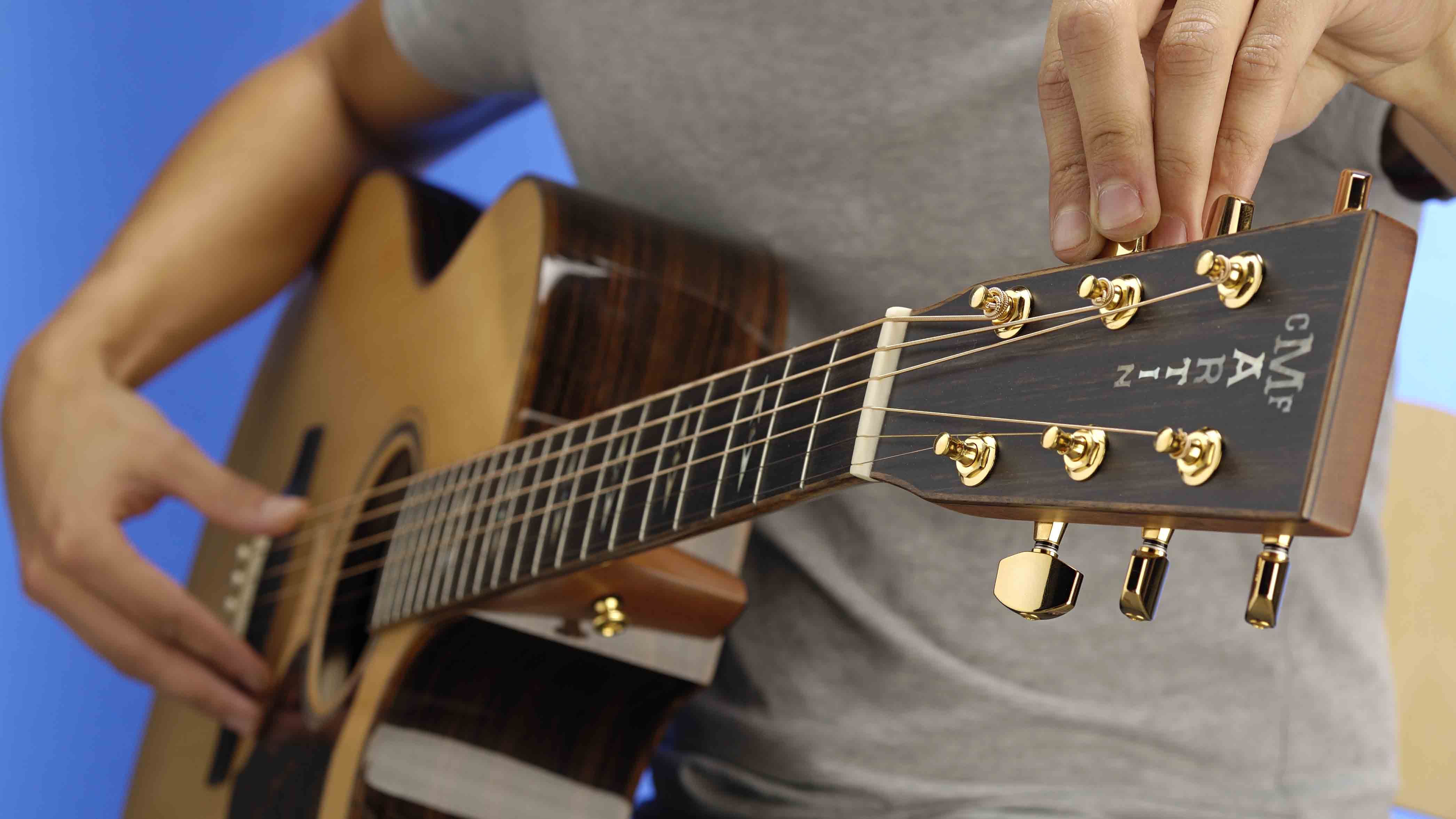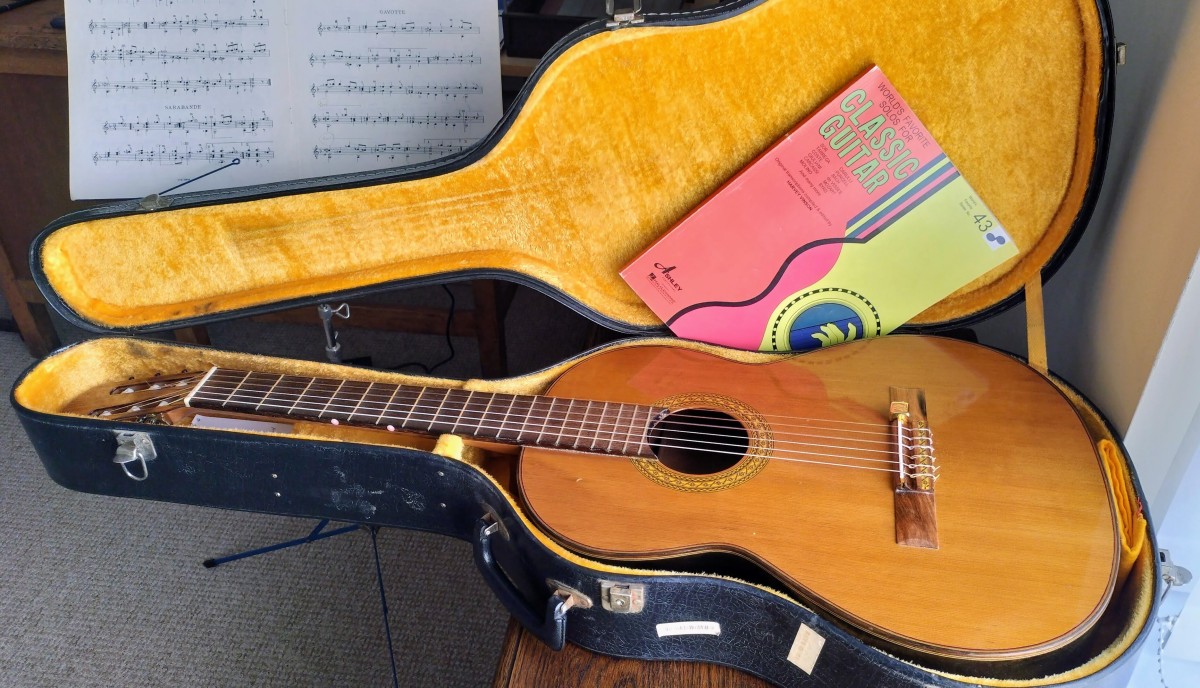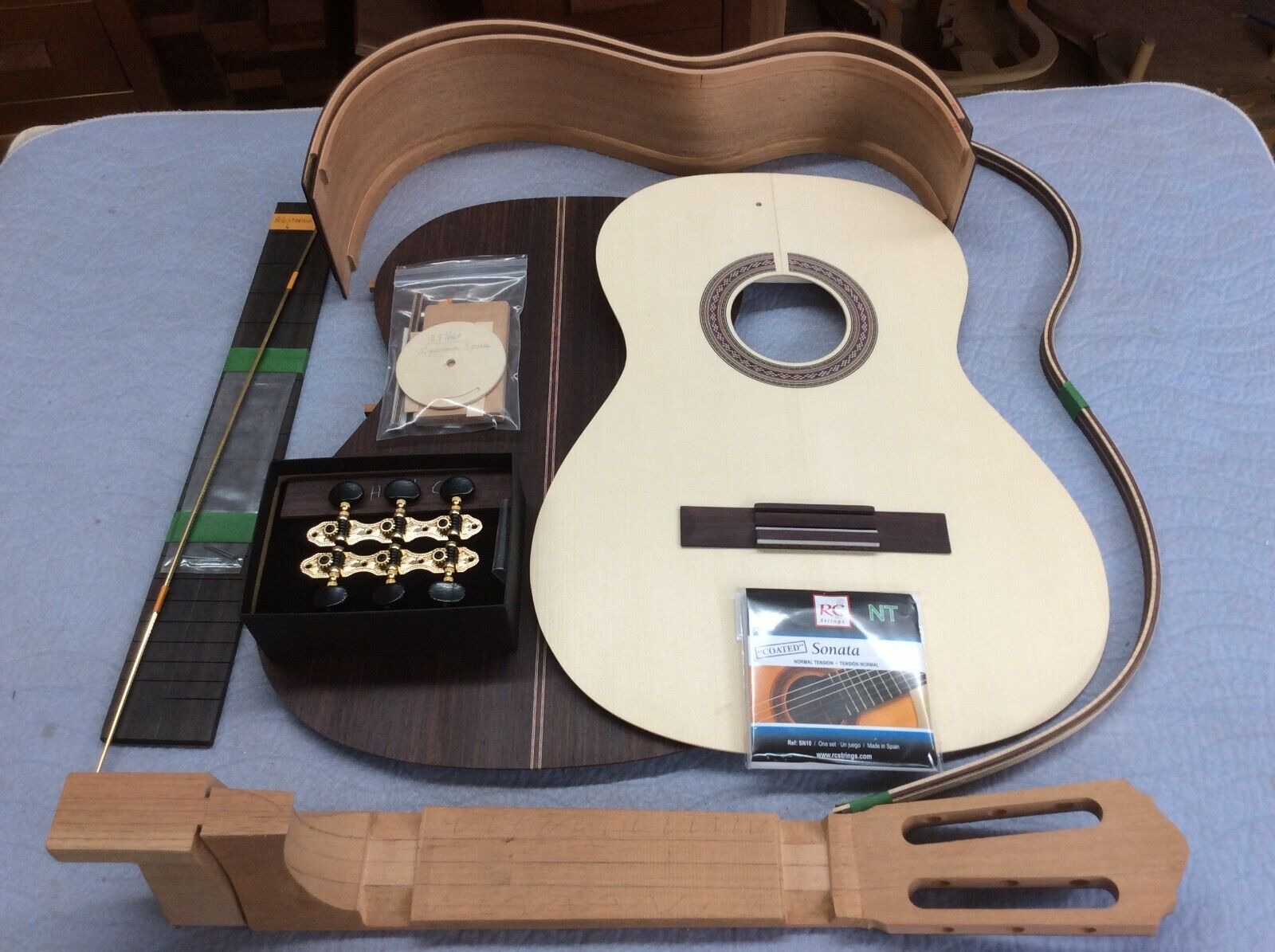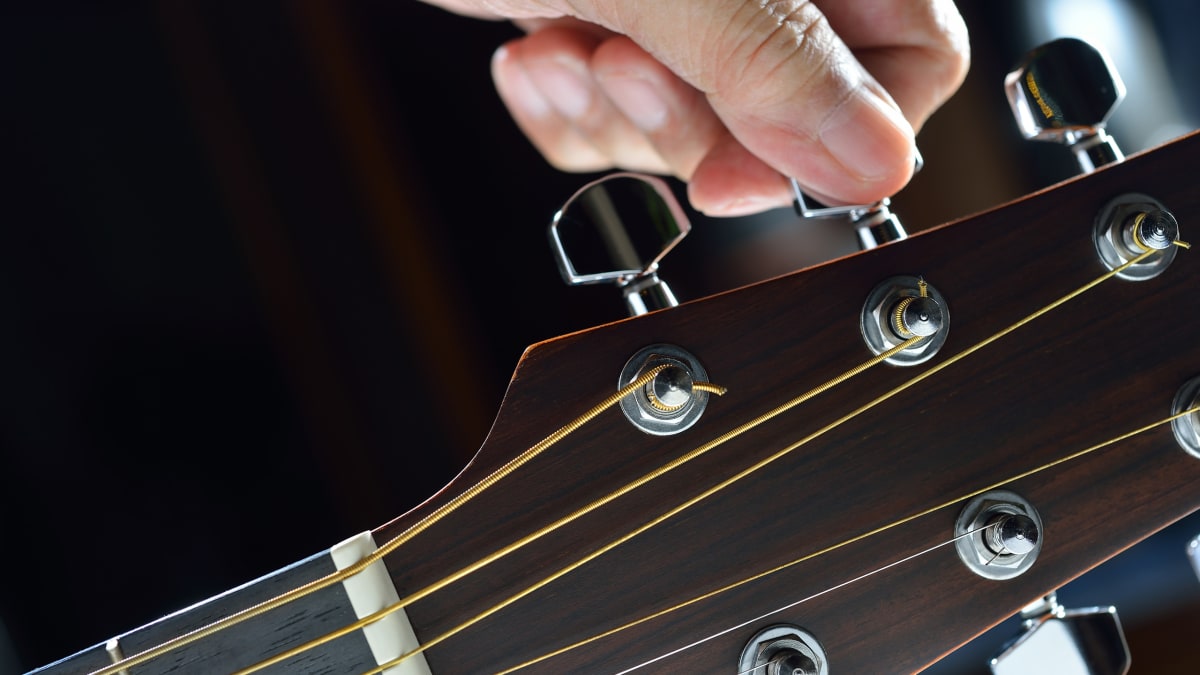

Classical
How To Tune Classical Guitar
Modified: January 22, 2024
Learn how to tune your classical guitar with our easy step-by-step guide. From understanding the strings to achieving perfect pitch, we've got you covered.
(Many of the links in this article redirect to a specific reviewed product. Your purchase of these products through affiliate links helps to generate commission for AudioLover.com, at no extra cost. Learn more)
Table of Contents
Introduction
Welcome to the world of classical guitar! Whether you’re a seasoned player or just starting out, one crucial aspect of playing the classical guitar is tuning. Proper tuning is essential for producing beautiful, resonant sounds and creating harmonious melodies. In this article, we will delve into the art of tuning a classical guitar, providing you with step-by-step instructions and helpful tips to achieve the perfect sound.
Unlike other types of guitars, the classical guitar is typically played with nylon strings, which require a specific tuning method. The tuning process involves adjusting the tension of each string to produce the desired pitch. While it may seem daunting at first, with practice and patience, you will become adept at tuning your classical guitar.
Whether you are performing on stage, practicing at home, or jamming with friends, a well-tuned classical guitar will enhance your playing experience and impress your audience. So, let’s dive into the world of classical guitar tuning and discover the secrets to achieving crisp, clear, and captivating sounds.
Understanding Classical Guitar Tuning
Before we dive into the specific steps of tuning a classical guitar, it’s important to understand the basics of classical guitar tuning. Unlike other types of guitars, classical guitars typically have six strings, tuned in E-A-D-G-B-E from low to high. However, classical guitarists often navigate different tunings to suit their musical preferences or to play specific pieces.
One popular alternative tuning is drop D tuning, where the low E string is tuned down to D, giving the guitar a richer, deeper sound. Another common tuning is the DADGAD tuning, widely used in Celtic and folk music.
Each string on a classical guitar is designated by a specific note. The first string, also known as the high E string, is the thinnest and produces a high-pitched sound. The second string is the B string, followed by the G, D, A, and the low E string, which produces the lowest pitch.
It’s important to note that different playing styles and genres may require specific tunings, so be sure to research and follow the appropriate tuning guidelines. Understanding the traditional tuning as well as alternative tunings will allow you to explore a vast range of musical possibilities on your classical guitar.
Now that we have a basic understanding of classical guitar tuning, let’s move on to the step-by-step process of tuning your instrument.
Steps to Tune a Classical Guitar
Now that you understand the basics of classical guitar tuning, let’s dive into the step-by-step process of tuning your instrument:
- Start with the sixth string: The sixth string is the low E string, which produces the deepest pitch. Use either a digital tuner or a reference pitch (such as a piano or another tuned instrument) to match the pitch of the sixth string. Adjust the tuning peg until the string is in tune.
- Tuning the fifth string: The fifth string is the A string. Press down the fifth fret on the sixth string and play it. At the same time, play the open fifth string. Adjust the tuning peg of the fifth string until both notes sound the same.
- Tuning the fourth string: The fourth string is the D string. Similar to step 2, press down the fifth fret on the fifth string and play it. At the same time, play the open fourth string. Adjust the tuning peg of the fourth string until both notes sound identical.
- Tuning the third string: The third string is the G string. This time, press down the fourth fret on the fourth string and play it. At the same time, play the open third string. Adjust the tuning peg of the third string until both notes are in tune with each other.
- Tuning the second string: The second string is the B string. Press down the fifth fret on the third string and play it. At the same time, play the open second string. Adjust the tuning peg of the second string until both notes match.
- Tuning the first string: The first string is the high E string. Press down the fifth fret on the second string and play it. At the same time, play the open first string. Adjust the tuning peg of the first string until both notes are perfectly in tune with each other.
Remember to take your time and use your ears to gauge the accuracy of each string’s pitch. Once all six strings are properly tuned, your classical guitar is ready to produce beautiful music.
It’s important to note that the strings on a classical guitar will gradually lose their tension over time. Therefore, regular tuning is necessary to maintain optimal sound quality. Additionally, keep in mind that changes in temperature and humidity can affect your guitar’s tuning, so be prepared to make minor adjustments as needed.
Now that you have mastered the steps to tune a classical guitar, let’s explore some common tuning issues and how to address them.
Common Tuning Issues
While tuning a classical guitar may seem straightforward, there are several common issues that guitarists often encounter. Here are some of the most frequent tuning issues and how to address them:
- Strings going out of tune quickly: If you find that your strings are constantly going out of tune, it could be due to a few factors. First, make sure that you are properly winding the strings around the tuning pegs, ensuring a secure and tight fit. Additionally, check if there are any sharp edges or burrs on the nut or bridge that may be causing the strings to slip. Lastly, consider investing in higher quality strings, as cheaper strings have a tendency to lose their tuning stability more quickly.
- Pitch accuracy: Sometimes, even if your strings are in tune with a tuner, they may still not sound quite right when played together. This is a common issue known as intonation. To address this, you can adjust the position of the saddle (the small piece on the bridge where the strings rest). Consult a professional guitar technician for help in adjusting the saddle if needed.
- String stretching: New strings tend to stretch and settle into their proper pitch over time. When you first install a new set of strings, they may require frequent retuning until they stretch out and stabilize. Be patient and continue to tune your guitar until the strings hold their pitch consistently.
- Unwanted buzzing or rattling: If you notice buzzing or rattling sounds when you play certain notes or chords, it may indicate an issue with the guitar’s setup. In this case, it’s best to have a professional check the neck relief, the action (string height), and the overall setup of your guitar to ensure optimal playability and tuning.
By addressing these common tuning issues, you will be able to maintain a stable and accurate tuning on your classical guitar, allowing you to fully enjoy your playing experience.
Now that we have explored common tuning issues, let’s move on to some helpful tips for maintaining proper guitar tuning.
Tips for Maintaining Proper Guitar Tuning
Keeping your classical guitar in tune is essential for producing beautiful music. Here are some tips to help you maintain proper guitar tuning:
- Use high-quality strings: Investing in high-quality strings will not only improve the overall sound of your guitar but also help maintain better tuning stability. Cheap strings tend to stretch and go out of tune more quickly.
- Stretch and settle new strings: When you install a new set of strings, they will take time to stretch and settle into their proper pitch. Pulling and stretching each string gently after installation can help speed up the process.
- Avoid extreme temperature and humidity changes: Rapid changes in temperature and humidity can cause the wood on your guitar to expand or contract, affecting the tuning stability. Store your guitar in a controlled environment and avoid exposing it to extreme conditions.
- Use proper string winding technique: When restringing your guitar, make sure to wind the strings neatly and securely around the tuning pegs. This will help prevent slipping and ensure better tuning stability.
- Tune up before each playing session: Even if your guitar was in tune the last time you played it, it is still advisable to tune up before each practice or performance. This will account for any minor changes that may have occurred since the last time you played.
- Use a high-quality tuner: While tuning by ear can be a valuable skill to develop, using a reliable digital tuner will provide you with accurate and consistent results. There are many tuner options available, ranging from clip-on tuners to smartphone apps.
- Get regular guitar maintenance: Taking your guitar to a professional technician for regular maintenance check-ups and adjustments can help ensure optimal playability and tuning. They can address any issues with the guitar’s setup that may be affecting the tuning stability.
By implementing these tips, you will be able to maintain proper tuning on your classical guitar and enjoy a more seamless and enjoyable playing experience.
Now that you have learned the steps to tune a classical guitar, how to address common tuning issues, and tips for maintaining tuning stability, you are well-equipped to keep your instrument in tune and produce beautiful music.
Conclusion
Congratulations! You have successfully navigated the world of classical guitar tuning. By following the steps outlined in this article, you can achieve the perfect pitch and ensure that your classical guitar is always ready to produce beautiful music.
Remember, tuning your guitar is not just a one-time task – it requires regular maintenance and attention. Changes in temperature, humidity, and even excessive playing can cause your guitar to go out of tune. Develop the habit of tuning your guitar before each practice or performance to ensure optimal sound quality and playability.
Additionally, understanding common tuning issues and implementing the tips for maintaining proper guitar tuning will help you troubleshoot any problems that may arise. Whether it’s adjusting the saddle, using high-quality strings, or avoiding extreme temperature changes, these techniques will keep your classical guitar in top shape.
Keep in mind that while tuners and digital tools can be helpful, it is also essential to train your ears and develop your ability to tune by ear. This skill will serve you well, especially in situations where a tuner may not be readily available.
So, grab your tuner, pluck those strings, and revel in the joy of playing a perfectly tuned classical guitar. With practice and dedication, you will become more confident in your tuning abilities and unlock the full potential of your instrument.
Happy strumming!











